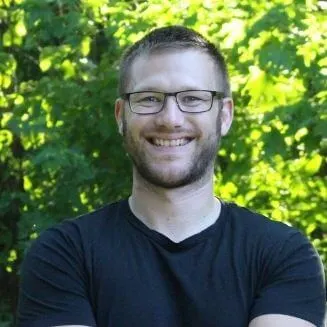 In the GuLight April Johnson
In the GuLight April Johnson
In the GuLight April Johnson
My family is my top priority and I love that BrainGu encourages a great work-life balance.
Always experiment, follow your curiosities, venture down rabbit holes and go an extra mile or two. It keeps things interesting and once in a while, it alters the course of your entire life.


Always experiment, follow your curiosities, venture down rabbit holes and go an extra mile or two. It keeps things interesting and once in a while, it alters the course of your entire life.
How long have you been working at BrainGu, and what do you do here?
1 year.
I'm a Data Engineer on BrainGu's rapid prototyping team. Data Engineers have much overlap with Software Engineers but focus more on the underlying data and how software interacts with it. For BrainGu prototyping, I take data from many different sources and convert it into something usable. Our MVPs have involved interesting data like flight radar data, aggregated social media data, and soldier health metrics. It boils down to a two-prong process: First, we have to understand the data we are looking at and write scripts to harness it. Second, we model everything in a database in a way that reflects what the information means in real life. From there we can send it off to web applications where it is displayed meaningfully to the world.
What was your first position at BrainGu, and describe your journey to your current position?
I have been a Data Engineer the whole time at BrainGu, but I think it would be interesting to become the resident blockchain expert if that technology ever becomes relevant to our work.
What’s your favorite thing about working at BrainGu?
The big picture. The U.S. DOD has a lot of catching up to do with the advances made in big tech, and keeping up is increasingly important as warfare expands into 4G and 5G paradigms and is fought with computers, information, and in our minds. BrainGu has the brainpower to bring the DOD to the forefront of what’s possible tech-wise, and the ambition to overcome what has blocked that from happening thus far. If we scale well, we can be an integral part of a necessary flippening wherein technology drives and defines the entire sector instead of getting form-fitted to the current model.
What’s been your favorite project that you’ve worked on so far?
Maize (mah-eez) was the most interesting. It would ingest media data from Twitter, other social media platforms, and various news sites to identify coordinated information campaigns. We got to experiment on a plethora of raw sample data using Elastic Search and Python scripts, so it was fun to see what stories seemed to be trending. One story that floated to the top was an article about a Taiwanese Pineapple trade embargo. We thought it was a failure of the algorithm but it turned out the commanders who saw the prototype were impressed by the pineapple story because it was actually relevant to what they were dealing with.
Tell us about one of your passions, outside of work.
I have a secret alias selling pngs and gifs as a generative NFT-artist. NFTs are blockchain tokens with extensive digital ownership use cases but are most famous for proving ownership of jpegs and gifs (Cryptopunks). In my spare time, I write algorithms that generate the art. It’s a great creative outlet that connects visual stimulation to coding structures like TreeMaps and Recursive formulas. For color schemas, I analyze pixel frequencies of 70’s sci-fi novels to give everything a retro vibe. The output files are listed as NFTs using platforms like OpenSea and Artblocks (Ethereum) and Hicetnunc (Tezos) where NFT collectors buy them with cryptocurrency. I’m also learning how to code Ethereum to write my own smart contracts. It’s a very nerdy rabbit hole that I never meant to go down, but making a point to explore weird paths is usually worth it one way or the other..
 In the GuLight April Johnson
In the GuLight April Johnson
My family is my top priority and I love that BrainGu encourages a great work-life balance.